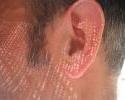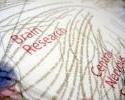High-functioning autism spectrum disorder (ASD) children appear to outgrow a critical social communication disability. Younger children with ASD have trouble integrating the auditory and visual cues associated with speech, but for many the problem clears up in adolescence.
Extremely hopeful; not fundamentally broken
“This is extremely hopeful finding,” said lead author John Foxe, PhD, professor of pediatrics and in the Dominick P. Purpura Department of Neuroscience. “It suggests that the neurophysiological circuits for speech in these children aren’t fundamentally broken and that we might be able to do something to help them recover sooner.”
Multisensory integration abilities appear to continue developing
The ability to integrate “heard” and “seen” speech signals is crucial to effective communication. Children who don’t develop this skill have trouble in the classroom and in social settings. Children with ASD integrate multisensory information like sound, touch and vision differently from typically developing children. For a typically developing child, multisensory integration (MSI) abilities continue to improve late into childhood. For this study, Dr. Foxe looked at whether this was true for one aspect of MSI – integrating audio and visual speech signals – for children with ASD.
The cocktail party test
The testing format they used on 222 children aged five to 17 was similar to the “cocktail party” effect. A noisy environment with many different people talking and the child needed to decode what was being said. In a setting like this, people will rely on auditory and facial cues to decipher what is being said. “You get a surprisingly big boost out of lip-reading, compared with hearing alone,” explained Dr. Fox. “It’s an integrative process.” One which ASD kids struggle with.
Something happens in adolescence with improves integration
While there were differences in the ASD kids and control group kids, the differences diminished and disappeared entirely in kids older than 12. “In adolescence, something amazing happens and the kids with ASD begin to perform like the typically developing kids,” said Dr. Foxe. “At this point, we can’t explain why. It may be a function of a physiological change in their brain or of interventions they’ve received, or both. That is something we need to explore.”
Source: MedicalNewsToday, Albert Einstein College of Medicine








